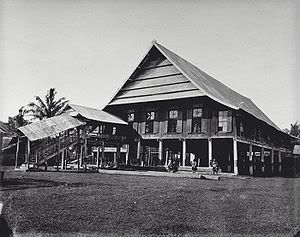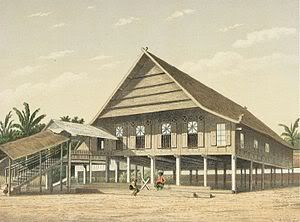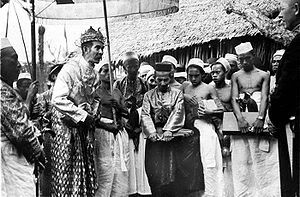DokterSehat.com - Sometimes it is cool discussing with friends feel wanted fart. Farts are sometimes really can make us ashamed if not exactly when. Usually the event so each point if the fart is muted. But really what's the fart?
1. where farts come from?
Of gas in the intestines. Gas in the gut comes from air we swallow, gas break through into the intestines from the blood, gas and gas from the chemical reaction of the bacteria in the stomach.
2. What is the composition of fart?
Varies. The more air you swallow, the more levels of nitrogen in the gas (oxygen from the air absorbed by the body before it reaches the intestine). The presence of bacteria and chemical reactions between stomach acid & intestinal fluid produces carbon dioxide. Bacteria also produce methane & hydrogen. The proportion of each gas depending on what you eat, how much air you swallowed, the type of bacteria in the gut, how long we hold the fart. The longer withstand wind, the greater the proportion of nitrogen, because the other gases absorbed by the blood through the intestinal wall. People who eat in a hurry oxygen levels in the fart more because his body could not absorb oxygen. (So do not hold back like fart).
3. Why do farts stink?
The smell of farts because the content of hydrogen sulfide & mercaptan. Both of these compounds containsulfur (sulfur). The more sulfur content in your food, the more sulfides & mercaptan produced by bacteria in the stomach, & the more you fart busuklah. Eggs & meat had a big role in producing bad smell fart. Legumes play a role in producing the volume of gas, not in the rot.
4. Why fart noises?
Because of the vibrations during anus fart produced. The severity depends on the speed of sound of gas. (And your anus hole diameter, hi .. hi ....)
5. Why do farts smell was warm & no noise?
One source of fart is bacteria. Bacterial fermentation & digestion process produces heat, the gas side is rotten. Gas bubble size is smaller, warm & saturated with bacterial metabolic products noisome. It later became fart, though only a small volume, but the SBD (Silent But Deadly).
6. How much gas is produced per day?
The average half-liter of farts a day in 14 times.
7. Why do farts come out through the anus?
Because of its density is lighter, why do not fart gas to travel upward? Not so. Intestinal peristalsis push it downward. Pressure around the lower rectum. Intestinal peristalsis made into a pressurized chamber, thereby forcing the contents of the intestine, including its gas to move to a lower pressure region who, around the anus. On the way to the anus, small bubbles join to be a big bubble. If there is no peristalsis, the gas bubbles will break through to the top again, but not too much, because who form complex intestinal & berbeit the bush. (Imagine if farting out of the nostrils).
8. How much time required by the fart to travel to someone else's nose?
Depending on weather conditions, such as humidity, temperature, wind speed & direction, fart gas molecular weight, the distance between 'transmitter' and 'receivers'. Once leaving the source, spreads & fart gas concentration is reduced. If the fart is not detected within a few seconds, is to experience dilution in the air & air lost forever. Except when you fart in tight spaces, like elevators, cars, more concentration, so the smell will stay for a long time until finally absorbed the wall.
9. Is everyone farts?
Certainly, if still alive. Shortly after meninggalpun people can still fart. (Why not be ashamed if often farts)
10. Is it true that men fart more often than women?
Nothing to do with gender .. If true, it means that women hold farts, fart & current significantly the number who were excluded. (That's why women are more smelly fart, ha .. ha ....)
11. At what usually people fart?
Morning in the toilet. the so-called "morning thunder". If the resonance is good, can be heard throughout the house.
12. Why not eat nuts cause a lot of fart?Nuts contain sugars that the body can not digest.
TSB sugar (raffinose, stachiose, verbascose) if it reaches the intestine, bacteria in the gut immediately feasted & make a lot of gas. Corn, peppers, cabbage, cauliflower, milk also causes a lot of farting (not the smell!).
13. Besides food, what are the causes of farts?
Swallowed air, eat in a hurry, eat without chewing, drinking soft drinks, a plane (because of lower air pressure, so that the gas in the intestine has emerged as a fart & expansion).
14. Is farting together with saltpeter, but emerged from another hole?
No ... burp emerges from the stomach, the other with a fart its chemical composition. Saltpeter contains more air, farts contain gas produced by bacteria more.
15. Where has held that fart gas is not removed?
Not absorbed blood, not lost due to leak .. But migrate to the intestine toward the top & in turn will be out as well. So it's not gone, but only delayed.
16. Might burn farts?
Could be. Farts contain methane, a combustible hydrogen (natural gas containing these components as well). If it burns, its flame is blue because the content of the element hydrogen. (Kalo up the mountain, but forgot to bring matches indomie would cook, wear make fart aja turn on the stove)
17. Can light a match with a fart?
Do not be ridiculous. .. Another consistency. Also the temperature is not hot enough to initiate combustion.
18. Why is farting dogs & cats more rotten?
Because dogs & cats are carnivores (meat eaters). Meat is rich in protein. Many sulfur-containing proteins, so this animal farts smell more rotten. Other herbivores such as cows, horses, elephants, which produce more farts, longer, louder sound, but is relatively odorless. (So much better pet elephant at home rather than dog).
19. Is it true that if you can smell the fart drunk 2-3 times in a row?
Farts contain less oxygen, may experience dizziness if you smell the fart too much. (So who had a hobby of smell farts, should be decreased)
20. Does the color of fart?
Colorless. If the color is orange like nitrogen oxides, willfound out who farted.
21. Fart it is acidic, basic or neutral?
Acid, because it contains karbondioksisa (CO2) & hydrogen sulfide (H2S).
22. What happens if someone farted on Venus?
The planet Venus has a lot of sulfur (sulfur) in the lining of the air, so fart in thence no effect.
Translated from original post
http://doktersehat.com/apa-itu-kentut/
 :.
:.







